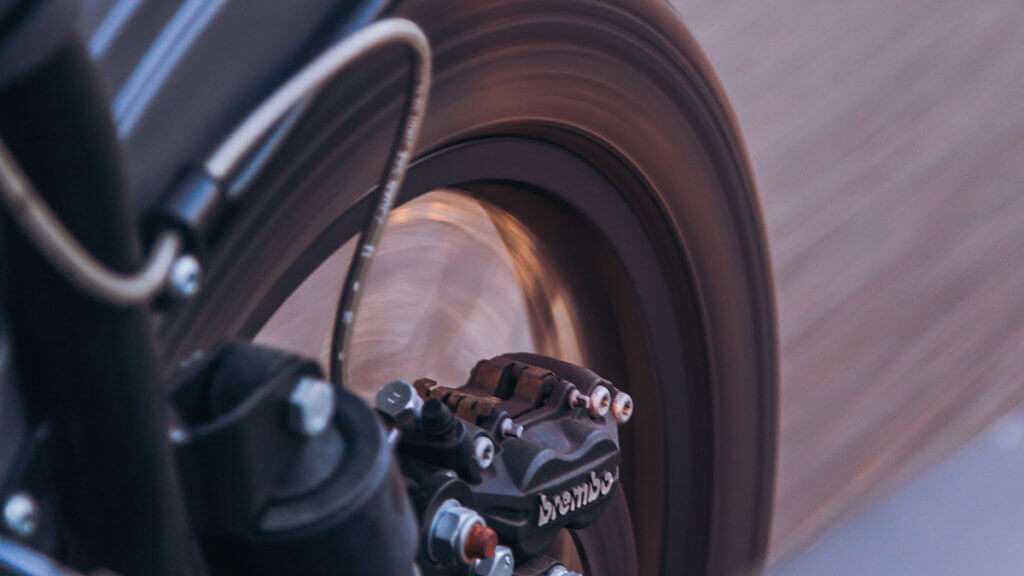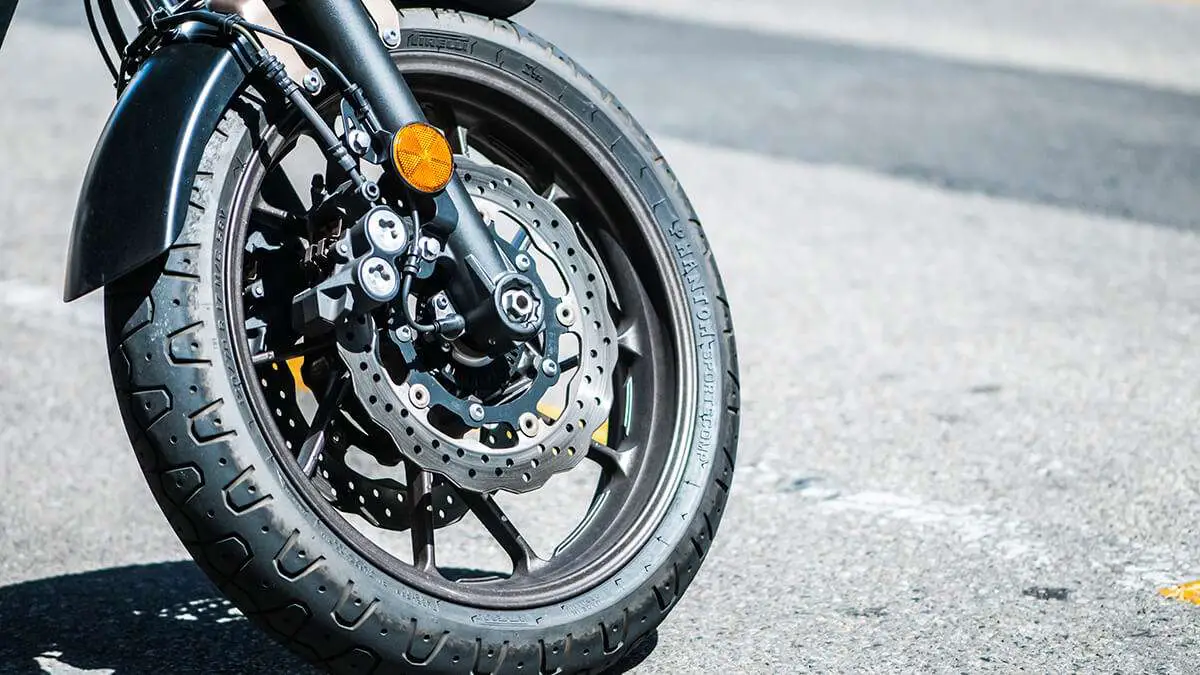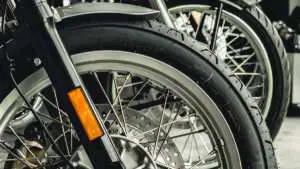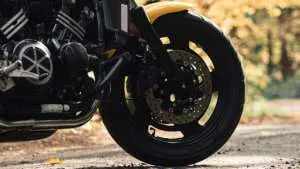Contents
Believe it or not, motorcycle tire patching is a hot button debate throughout the biker community. It’s pretty much 50/50 as to whether you can patch a motorcycle tire. It’s even more divided when it comes to whether or not you should. Who’s right? Let’s begin by looking at the question itself.
Can you patch a motorcycle tire? In short, yes. While some riders would argue that is the most dangerous thing you can do, there is evidence to support that in a pinch, it would be a reasonable action to take, but only if done correctly. However, a motorcycle tire patch is only meant to be a temporary solution until the tire itself can be properly replaced.
Well, even that answer doesn’t sound very definitive. We decided to look further into the question and, at the very least, provide you with the safest and most responsible way to handle a situation where you need to patch the tire on your motorcycle.
Can a Motorcycle Tire be Patched?

The obvious answer is yes. The real question is, should you patch a motorcycle tire? The answer is not so easy. First of all, it will be very difficult to find a shop willing to patch your motorcycle’s tire. If they patch it, they are liable is the patch fails and an accident occurs. The majority of repair shops won’t take the risk.
If you absolutely have to patch the tire as a temporary situation, it should be decided on a case by case basis. There are a few different situations where a patch is far more dangerous than calling roadside assistance.
Where is the Hole in Need of Patching?
This is the biggest issue at hand. In some situations, no matter where the community stands on patching, it is not at all safe to patch a tire. The first consideration is where the hole is located on the tire.
If the hole is on the sidewall, you cannot patch it. The sidewall of your bike’s tires is not stable enough to plug. There just isn’t enough support there. The rubber there is much thinner than the rest of the tire, and while moving, the sidewall is flexible to allow turning. The unstable nature of the sidewall may actually destroy the plug itself and lead to a full-scale blowout.
Front or Back Tire?

Whenever possible, it’s best to avoid patching the front tire. If a patch on the rear tire becomes unstable or begins to fail, you have a good chance of being able to slowly stop your bike and pull over to safety.
Taking the exact same action with a front tire patch is extremely dangerous. While attempting to stop your bike, a front blow out makes steering nearly impossible, possibly throwing you off the bike or even over the handlebars causing a potentially fatal accident.
Have You Patched a Motorcycle Tire Before?
If you happen to find yourself alone in the middle of nowhere facing the possibility of patching a motorcycle for the first time, the answer is clear no matter who you ask: Don’t do it. The safety and stability of a tire patched by a beginner are unpredictable at best.
Unless you’ve completely removed the bike and properly perform the patch from the inside, there’s really no way to know how damaged the tire is from the hole. Sometimes the belt is compromised, making it impossible to patch adequately. Sometimes the damage that lay beneath is just too much to patch, no matter how experienced you are.
The only thing that can be done in this instance is to safely pull to the side of the road out of the way of traffic and call for help. As much as you may not want to pay a recovery service, We assure you that the price is far lower than that of an injury or possibly death.
Does the Type of Motorcycle Make a Difference?
It absolutely does! If you are riding trails on a dirt bike, it’s much safer to patch the tire and continue with your day. While street bikes have steel belts inside of the tire, dirt bikes do not. Most have a canvas belt within the tire walls that is much more forgiving. If the canvas belt is compromised, your situation will become at best slightly annoying.
Sometimes a patch can be a long-term solution in this case. There have even been trail riders whose patch job ends up being a permanent solution. The malleable nature of the canvas molds around the patch, creating a permanent seal. This is not the case with a street bike.
Just like your car’s tires, a street bike has a steel belt within the tire itself. This can be tricky because if the belt starts to come apart near the hole, it will result in an instant blow out and a potentially fatal situation.
What You Need to Consider While Riding With a Patched Wheel

First and foremost, you need to reduce your speed. Continuing at high speeds with a patched tire can result in fraying the treads, making a complete blow out far more likely. If you are with a group, it’s a good idea to ride in the middle, so if problems begin to occur, they can assist in escorting you to the side of the road.
Weather conditions play a part in this as well. If road surfaces are slippery, you are already overcompensating for that. Adding a bad tire makes it far more dangerous. The long and short is, if you need to stop, stop. If you need to call for help, do it. It’s not worth endangering your life or the lives of other motorists.
How Long Can You Drive a Motorcycle on a Patched Tire?
There is no definitive answer to this. Each patch and each tire is different. There are no hard fast rules here. The general consensus in the motorcycle community is that you ride only as long as necessary. As soon as you can get the tire replaced, you should. A motorcycle tire patch is a completely different thing than a car tire patch.
What Types of Precautionary Measures Should You Take to Avoid the Need for a Patch?
The care and condition of your tires should be part of routine maintenance. Be sure to replace them based on mileage guidelines from the manufacturer. Maintaining proper air pressure in your tires is very important as well.
Sometimes, no matter how careful and prepared you are, the unexpected happens. There is no way to predict a nail piercing and otherwise perfect tire. No one can predict the behavior and awareness of the motorists around you. What you can do, however, is keep good maintenance of your equipment and behave responsibly.
Where Can I Find More Information?
Motorbeast.org put together a very nicely organized article giving the guidelines of how to patch, when to patch, and how long. You can also speak with your personal mechanic, local bike dealership, or even more experienced peers. The best advice usually comes from a veteran rider – their experience can be invaluable.
The bottom line is safety. Not only for yourself, but for everyone else on the road. A blow out on a bike tire can put everyone in jeopardy. Ride safe, everyone. Enjoy the wind in your hair.


 Can A Rear Motorcycle Tire Be Used On The Front?
Can A Rear Motorcycle Tire Be Used On The Front?  3 Motorcycle TPMS Options For Longer, Better Rides
3 Motorcycle TPMS Options For Longer, Better Rides  Oxford Kickback Shirt Review
Oxford Kickback Shirt Review  Do Motorcycle Radiator Guards Cause Overheating?
Do Motorcycle Radiator Guards Cause Overheating?